Indiana Jones and the Great Circle: The First Hands-on
One of Mussolini’s blackshirts is running at me with a club. I’m out of bullets, he’s coming at me too fast for me to use my whip, and I don’t back myself to take him down with my fists alone. I take a frenzied glance across the room, and see an indicator saying I can pick up something as an improvised weapon – I’m reacting too quickly to check exactly what. I smash my controller to grab it. It’s… a wooden spoon. Oh well. I dodge the first blow, and hammer at my foe with my less-than-impressive weaponry. He eventually goes down. Troy Baker’s pitch-perfect Harrison Ford performance fills my ears: “You went down like a leaf!”
MachineGames is looking to create the playable equivalent of an Indiana Jones movie. Well, I’ve just, quite accidentally, created a fight scene set piece that wouldn’t feel out of place in the series. Mission accomplished.
My two hours with the game – taking in its introduction at Marshall College, a short section at the Vatican, and a trip to the game’s first truly open area set around the Pyramids of Giza – is full of these moments. Cutscenes are charming and heartfelt, getting across the movies’ lighter moments – particularly when Indy begins to travel with hapless-but-talented journalist, Gina. Puzzles come with the sense of wonder and satisfaction you’d hope for from an Indy film. And, yes, the action is as much slapstick as it is brutal, with that sense of ‘50s B-Movie derring-do that Spielberg always aimed to recreate.
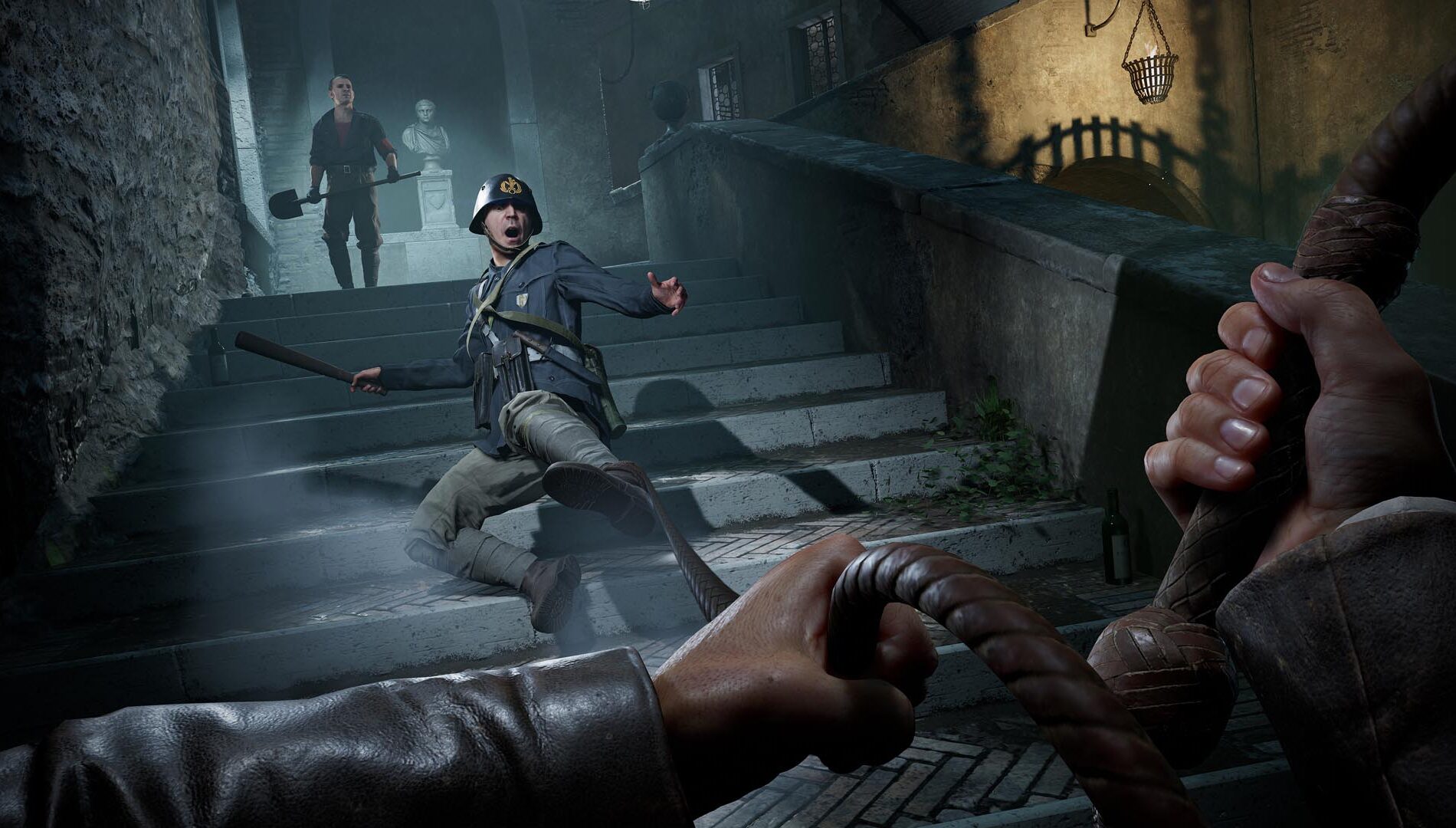
Controller in hand, this is a classic adventure game – MachineGames has brought its considerable experience with first-person action games, but pushed it so much further. In Marshall College, you’re given a truly sumptuous tutorial – Indy unsuccessfully attempts to foil a break-in (teaching you the rudiments of combat), works out which exhibit has been stolen from the museum (giving you the basics of puzzle solving), and asks you to follow clues to work out who broke in, and who they might work for (giving you some light traversal tips).
Following those clues to Vatican City, we’re then shown how the game will approach its more linear sequences – Indy needs to break into Vatican walls, getting past the fascist forces that have mysteriously moved in. It’s introduced as an exercise in stealth – levels are rammed with items you can pick up and throw to distract guards, from bottles to… violins. But you’re also taught that anything thrown can also be a weapon.
For someone who is shaky at stealth at the best of times, this is welcome news. One of the pure pleasures of Indiana Jones and the Great Circle is how seamlessly it shifts gears, and this section teaches that beautifully. One moment, I’m confusing guards with clattering objects, the next I’m up on the battlements of the castle, choosing my own path towards my objective (even these more straightforward sections offer multiple routes to success), and then I’m travelling down a zipline, alerting three guards, shooting two, realizing I’ve run out of bullets, and then realizing again that, when I’m out of bullets, I can use my revolver as a melee weapon (I wish I’d understood that during the wooden spoon incident, incidentally).
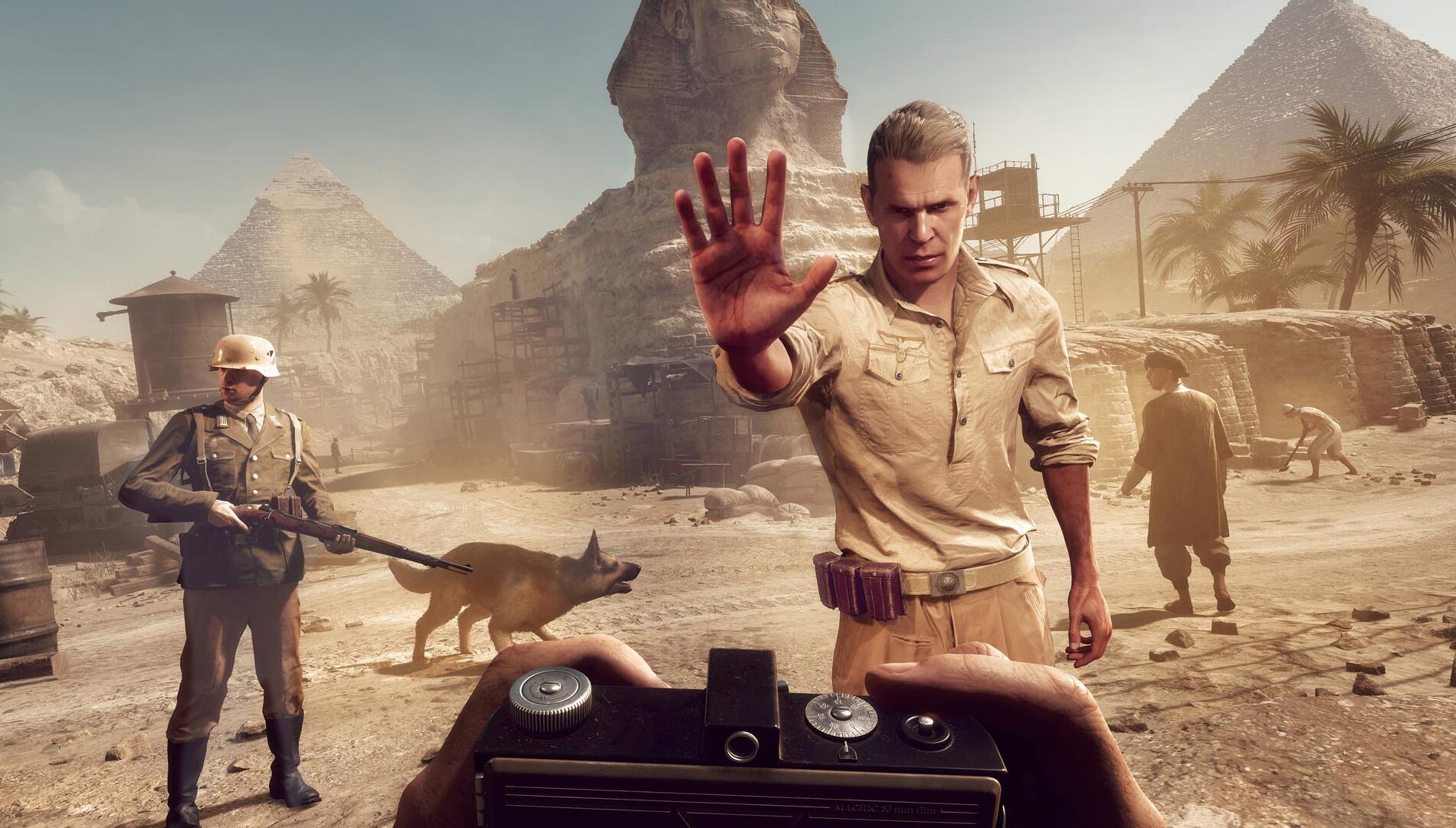
And after all of this, my demo whisked me to Giza, and I’m shown how much more of that spirit we’ll get. We already knew that the game would include more open areas along the journey, but I hadn’t quite realized how open we were talking. After a brief introduction where I meet Dame Nawal – an antiquities collector working to save the treasures of the Pyramids from the arrival of the Nazis – this section throws me into a huge swathe of playable space, packed with quests, side-quests, NPCs, and mysteries to be found along the way.
Indiana Jones and the Great Circle handles its open areas in some novel ways. Maps need to be found and collected, for a start – and once you find them, you’ll need to literally pull out the physical map to work out where you are, and where to go. It’s a means of reducing the onscreen UI, and to ground you in Indy’s analogue world. Fast travel is available around these areas, but only by finding road signs – again, making you engage with the world placed around you, rather than menus.
The result is that, in just a short time, I learned how the Giza area was put together much faster than I would in other games – I knew which roads led to where, and how to get from place to place without a map. It’s another means of making you Indy, rather than simply piloting the character around.
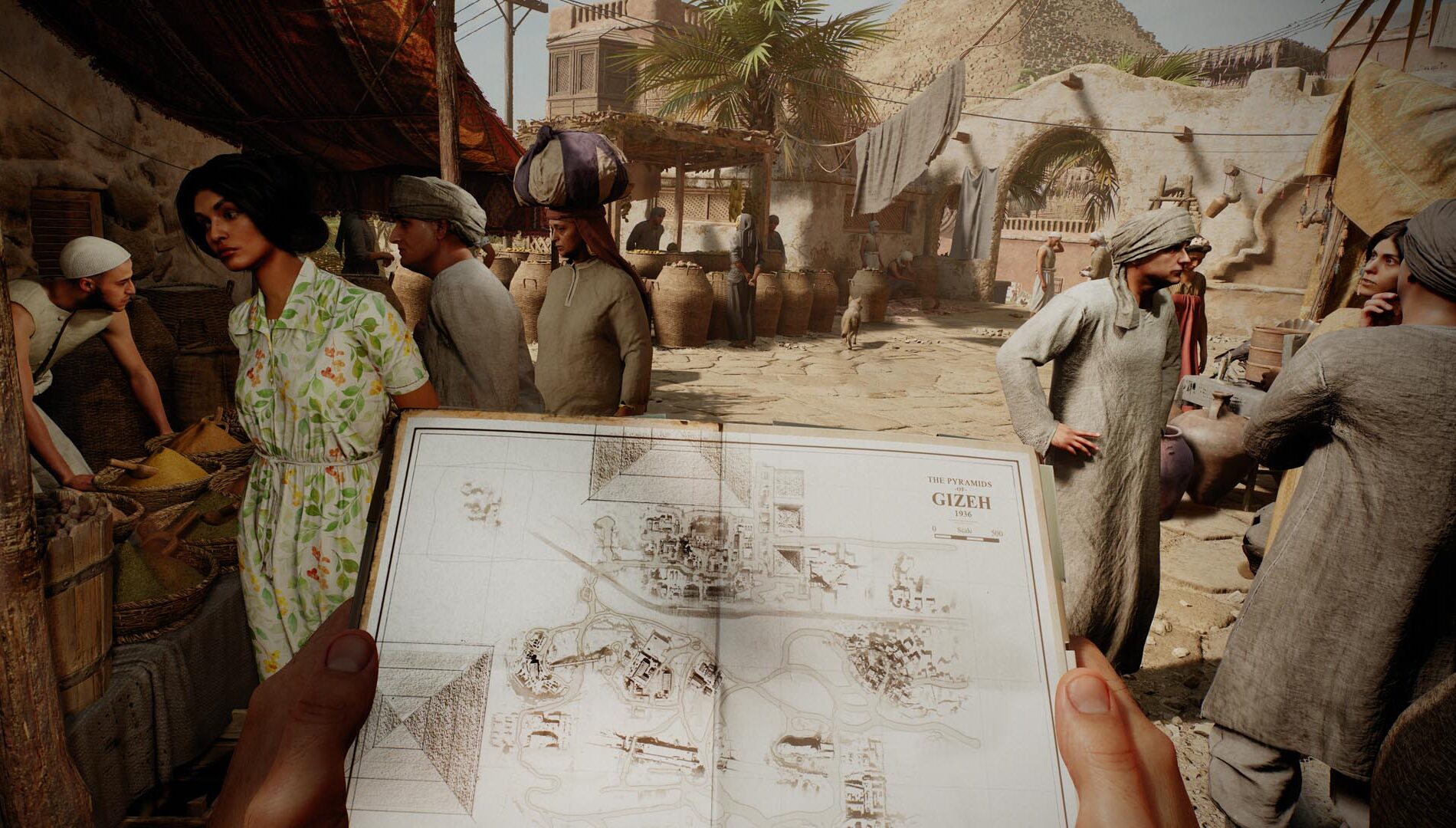
And it’s also a way of helping you find adventure on your own. While the game is clear about your main quest (you can open up your journal at any time, review clues you’ve found, and get pointers on where to head), it’s not insistent about making you do that quest. I initially took a walk to a market bazaar – but on the way found a wanted poster for a couple of graverobbers in the area. I followed their tracks to a hidden tomb I might otherwise never have seen, and discovered their grisly fate – and a skill book (the game’s means of ‘levelling up’ your abilities).
Once I headed back to the market, I bought a lighter from a dubious vendor, and left to take on a quest I’d been given at a dig site under the Great Sphinx. As I snuck into the area, I saw an unguarded door and, walking in, I spotted a space small enough to crawl into. I assumed this was an alternative route to my goal, but I quickly found a miniature puzzle I was never aiming for in the first place. I’d literally stumbled into an adventure.
This happened multiple times as I played – moments of discovery pile up to lead you to quests you didn’t know existed, offering up collectibles, skill books, and story. Wandering into a medical tent offered me the chance to help a local doctor, who needed me to steal medicine from the invading forces. Heading to a Nazi encampment, I was able to use a disguise I found to walk freely, pilfering supplies. And while I was in the camp, I heard two guards discussing an underground fight club that’s been set up in a local village – I never got the chance to find the uniform I needed to be able to sneak into said club, but I’ll absolutely be heading there when I play the full game.
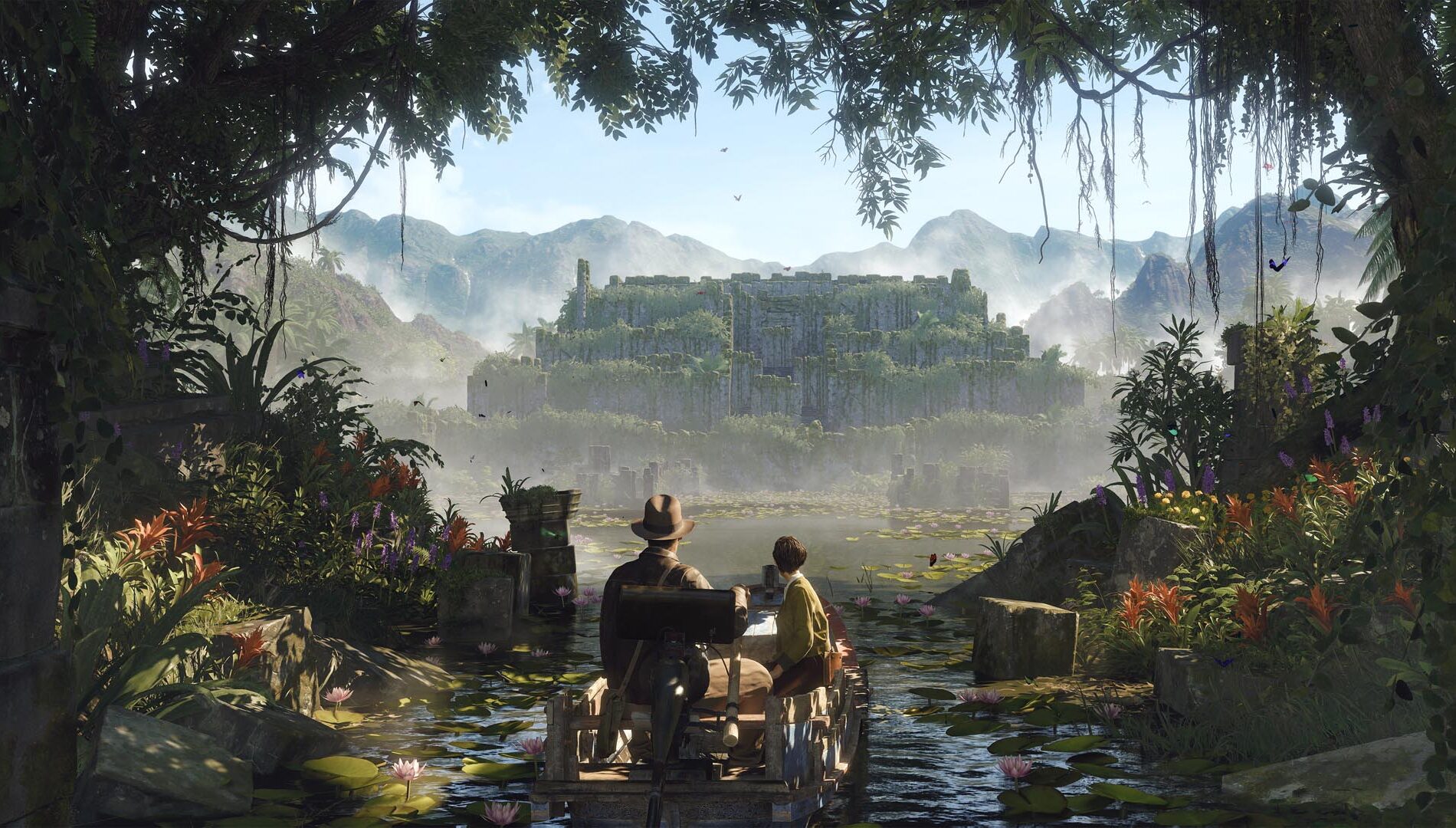
This kind of organic, fortuitous discovery feels so right for an Indiana Jones game, and it’s a joy to see it coming together in such a short time with this small slice of the full adventure. And when I don’t get sidetracked by my wandering eye, the game’s main quests offer me more fully-fledged delights. When I reach my originally intended destination at the Great Sphinx, I meet Gina in a guarded dig site (kicking off a huge fight outside before I do so), then head off to steal a golden medallion from Nazi officers playing a game of cards, before returning to solve multiple puzzles in the bowels of the Earth.`
Another major quest sees me scouring multiple locations across Giza in search of precious, ancient steles – needing to fight off scorpions by waving flaming torches (you really should get that lighter), smash down bricked up walls into undiscovered tombs, and sneak into a Nazi transport depot, taking down a captain, learning a code from a letter nearby, and breaking into a lockbox to find the stolen goods.
I’ve played just two hours of Indiana Jones and the Great Circle, and I already have this many stories to tell. It bodes beautifully for the full experience – like I say, if this is an exercise in making you feel like Indy – mission accomplished.
Indiana Jones and the Great Circle comes to Xbox Series X|S and Windows PC (with Game Pass), or Steam on December 9. Premium and Collector’s Editions will offer 3 days of early access from December 6.
Indiana Jones and the Great Circle : Digital Premium Edition
: Digital Premium Edition
Bethesda Softworks
 Pack with the Traveling Suit Outfit and Lion Tamer Whip, as seen in The Last Crusade
Pack with the Traveling Suit Outfit and Lion Tamer Whip, as seen in The Last Crusade .
***
Live the adventure with the Premium Edition of Indiana Jones and the Great Circle
.
***
Live the adventure with the Premium Edition of Indiana Jones and the Great Circle !
INCLUDES:
• Base Game (digital code)
• Up to 3-Day Early Access**
• Indiana Jones and the Great Circle: The Order of Giants Story DLC†
• Digital Artbook
• Temple of Doom
!
INCLUDES:
• Base Game (digital code)
• Up to 3-Day Early Access**
• Indiana Jones and the Great Circle: The Order of Giants Story DLC†
• Digital Artbook
• Temple of Doom Outfit
***
Uncover one of history’s greatest mysteries in Indiana Jones and the Great Circle, a first-person, single-player adventure set between the events of Raiders of the Lost Ark
Outfit
***
Uncover one of history’s greatest mysteries in Indiana Jones and the Great Circle, a first-person, single-player adventure set between the events of Raiders of the Lost Ark and The Last Crusade. The year is 1937, sinister forces are scouring the globe for the secret to an ancient power connected to the Great Circle, and only one person can stop them – Indiana Jones
and The Last Crusade. The year is 1937, sinister forces are scouring the globe for the secret to an ancient power connected to the Great Circle, and only one person can stop them – Indiana Jones . You’ll become the legendary archaeologist in this cinematic action-adventure game from MachineGames, the award-winning studio behind the recent Wolfenstein series, and executive produced by Hall of Fame game designer Todd Howard.
YOU ARE INDIANA JONES
Live the adventure as Indy in a thrilling story full of exploration, immersive action, and intriguing puzzles. As the brilliant archaeologist – famed for his keen intellect, cunning resourcefulness, and trademark humor – you will travel the world in a race against enemy forces to discover the secrets to one of the greatest mysteries of all time.
A WORLD OF MYSTERY AWAITS
Travel from the halls of Marshall College to the heart of the Vatican, the pyramids of Egypt, the sunken temples of Sukhothai, and beyond. When a break-in in the dead of night ends in a confrontation with a mysterious colossal man, you must set out to discover the world-shattering secret behind the theft of a seemingly unimportant artifact. Forging new alliances and facing familiar enemies, you’ll engage with intriguing characters, use guile and wits to solve ancient riddles, and survive intense set-pieces.
WHIP-CRACKING ACTION
Indiana’s trademark whip remains at the heart of his gear and can be used to distract, disarm, and attack enemies. But the whip isn’t just a weapon, it’s Indy’s most valuable tool for navigating the environment. Swing over unsuspecting patrols and scale walls as you make your way through a striking world. Combine stealth infiltration, melee combat, and gunplay to combat the enemy threat and unravel the mystery.
THE SPIRIT OF DISCOVERY
Venture through a dynamic mix of linear, narrative-driven gameplay and open-area maps. Indulge your inner explorer and unearth a world of fascinating secrets, deadly traps and fiendish puzzles, where anything could potentially hide the next piece of the mystery – or snakes. Why did it have to be snakes?
*Game Pass members get access to all pre-order content as long as Game Pass subscription is active.
**Actual play time depends on purchase date and applicable time zone differences, subject to possible outages.
†DLC availability to be provided at a later date.
. You’ll become the legendary archaeologist in this cinematic action-adventure game from MachineGames, the award-winning studio behind the recent Wolfenstein series, and executive produced by Hall of Fame game designer Todd Howard.
YOU ARE INDIANA JONES
Live the adventure as Indy in a thrilling story full of exploration, immersive action, and intriguing puzzles. As the brilliant archaeologist – famed for his keen intellect, cunning resourcefulness, and trademark humor – you will travel the world in a race against enemy forces to discover the secrets to one of the greatest mysteries of all time.
A WORLD OF MYSTERY AWAITS
Travel from the halls of Marshall College to the heart of the Vatican, the pyramids of Egypt, the sunken temples of Sukhothai, and beyond. When a break-in in the dead of night ends in a confrontation with a mysterious colossal man, you must set out to discover the world-shattering secret behind the theft of a seemingly unimportant artifact. Forging new alliances and facing familiar enemies, you’ll engage with intriguing characters, use guile and wits to solve ancient riddles, and survive intense set-pieces.
WHIP-CRACKING ACTION
Indiana’s trademark whip remains at the heart of his gear and can be used to distract, disarm, and attack enemies. But the whip isn’t just a weapon, it’s Indy’s most valuable tool for navigating the environment. Swing over unsuspecting patrols and scale walls as you make your way through a striking world. Combine stealth infiltration, melee combat, and gunplay to combat the enemy threat and unravel the mystery.
THE SPIRIT OF DISCOVERY
Venture through a dynamic mix of linear, narrative-driven gameplay and open-area maps. Indulge your inner explorer and unearth a world of fascinating secrets, deadly traps and fiendish puzzles, where anything could potentially hide the next piece of the mystery – or snakes. Why did it have to be snakes?
*Game Pass members get access to all pre-order content as long as Game Pass subscription is active.
**Actual play time depends on purchase date and applicable time zone differences, subject to possible outages.
†DLC availability to be provided at a later date. Indiana Jones and the Great Circle Standard Edition
Standard Edition
Bethesda Softworks
 Pack with the Traveling Suit Outfit and Lion Tamer Whip, as seen in The Last Crusade
Pack with the Traveling Suit Outfit and Lion Tamer Whip, as seen in The Last Crusade .
***
Uncover one of history’s greatest mysteries in Indiana Jones and the Great Circle
.
***
Uncover one of history’s greatest mysteries in Indiana Jones and the Great Circle , a first-person, single-player adventure set between the events of Raiders of the Lost Ark
, a first-person, single-player adventure set between the events of Raiders of the Lost Ark and The Last Crusade. The year is 1937, sinister forces are scouring the globe for the secret to an ancient power connected to the Great Circle, and only one person can stop them – Indiana Jones
and The Last Crusade. The year is 1937, sinister forces are scouring the globe for the secret to an ancient power connected to the Great Circle, and only one person can stop them – Indiana Jones . You’ll become the legendary archaeologist in this cinematic action-adventure game from MachineGames, the award-winning studio behind the recent Wolfenstein series, and executive produced by Hall of Fame game designer Todd Howard.
YOU ARE INDIANA JONES
Live the adventure as Indy in a thrilling story full of exploration, immersive action, and intriguing puzzles. As the brilliant archaeologist – famed for his keen intellect, cunning resourcefulness, and trademark humor – you will travel the world in a race against enemy forces to discover the secrets to one of the greatest mysteries of all time.
A WORLD OF MYSTERY AWAITS
Travel from the halls of Marshall College to the heart of the Vatican, the pyramids of Egypt, the sunken temples of Sukhothai, and beyond. When a break-in in the dead of night ends in a confrontation with a mysterious colossal man, you must set out to discover the world-shattering secret behind the theft of a seemingly unimportant artifact. Forging new alliances and facing familiar enemies, you’ll engage with intriguing characters, use guile and wits to solve ancient riddles, and survive intense set-pieces.
WHIP-CRACKING ACTION
Indiana’s trademark whip remains at the heart of his gear and can be used to distract, disarm, and attack enemies. But the whip isn’t just a weapon, it’s Indy’s most valuable tool for navigating the environment. Swing over unsuspecting patrols and scale walls as you make your way through a striking world. Combine stealth infiltration, melee combat, and gunplay to combat the enemy threat and unravel the mystery.
THE SPIRIT OF DISCOVERY
Venture through a dynamic mix of linear, narrative-driven gameplay and open-area maps. Indulge your inner explorer and unearth a world of fascinating secrets, deadly traps and fiendish puzzles, where anything could potentially hide the next piece of the mystery – or snakes. Why did it have to be snakes?
*Game Pass members get access to all pre-order content as long as Game Pass subscription is active.
. You’ll become the legendary archaeologist in this cinematic action-adventure game from MachineGames, the award-winning studio behind the recent Wolfenstein series, and executive produced by Hall of Fame game designer Todd Howard.
YOU ARE INDIANA JONES
Live the adventure as Indy in a thrilling story full of exploration, immersive action, and intriguing puzzles. As the brilliant archaeologist – famed for his keen intellect, cunning resourcefulness, and trademark humor – you will travel the world in a race against enemy forces to discover the secrets to one of the greatest mysteries of all time.
A WORLD OF MYSTERY AWAITS
Travel from the halls of Marshall College to the heart of the Vatican, the pyramids of Egypt, the sunken temples of Sukhothai, and beyond. When a break-in in the dead of night ends in a confrontation with a mysterious colossal man, you must set out to discover the world-shattering secret behind the theft of a seemingly unimportant artifact. Forging new alliances and facing familiar enemies, you’ll engage with intriguing characters, use guile and wits to solve ancient riddles, and survive intense set-pieces.
WHIP-CRACKING ACTION
Indiana’s trademark whip remains at the heart of his gear and can be used to distract, disarm, and attack enemies. But the whip isn’t just a weapon, it’s Indy’s most valuable tool for navigating the environment. Swing over unsuspecting patrols and scale walls as you make your way through a striking world. Combine stealth infiltration, melee combat, and gunplay to combat the enemy threat and unravel the mystery.
THE SPIRIT OF DISCOVERY
Venture through a dynamic mix of linear, narrative-driven gameplay and open-area maps. Indulge your inner explorer and unearth a world of fascinating secrets, deadly traps and fiendish puzzles, where anything could potentially hide the next piece of the mystery – or snakes. Why did it have to be snakes?
*Game Pass members get access to all pre-order content as long as Game Pass subscription is active. Related Stories for “Indiana Jones and the Great Circle: The First Hands-on”
The post Indiana Jones and the Great Circle: The First Hands-on appeared first on Xbox Wire.


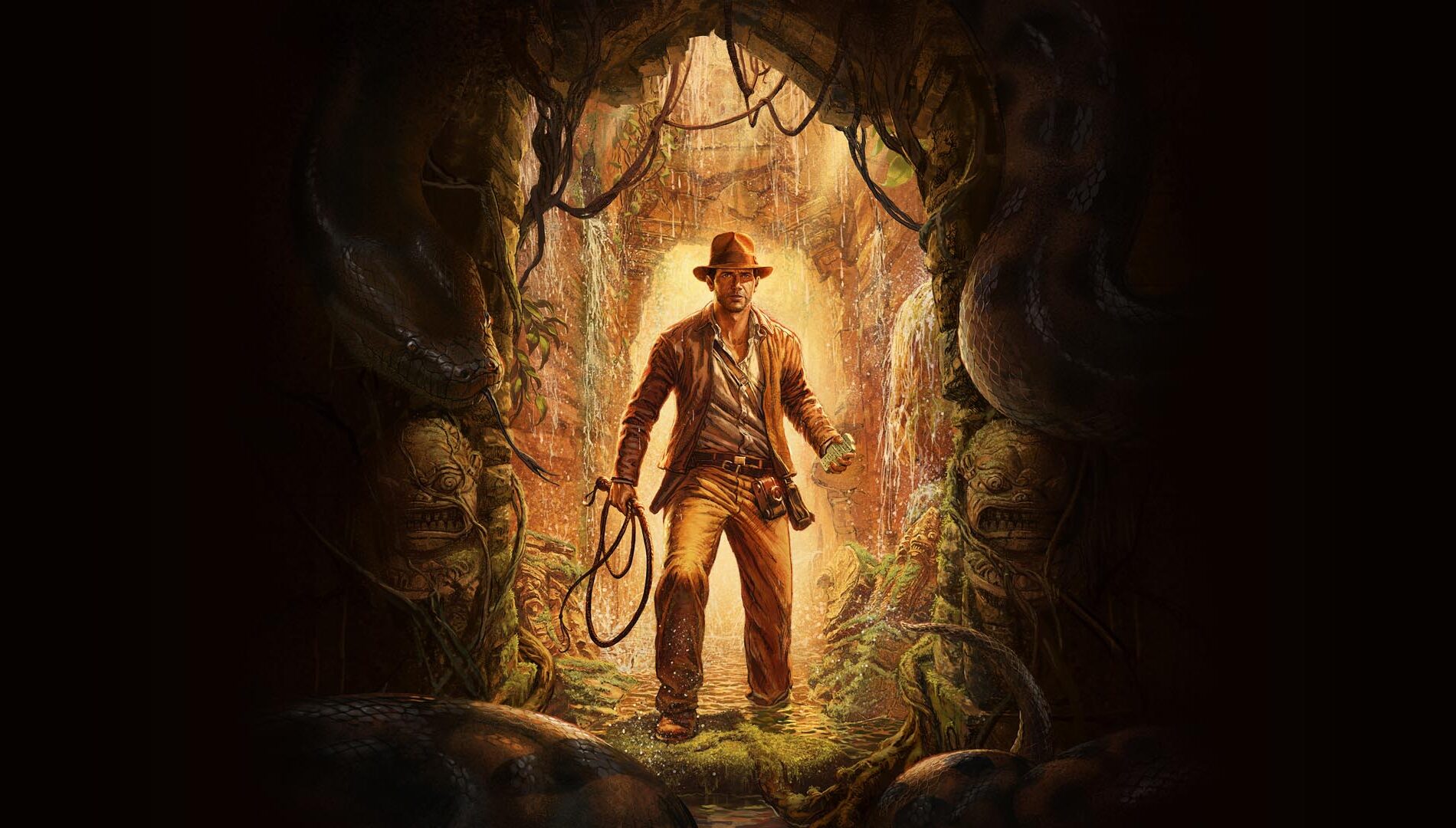


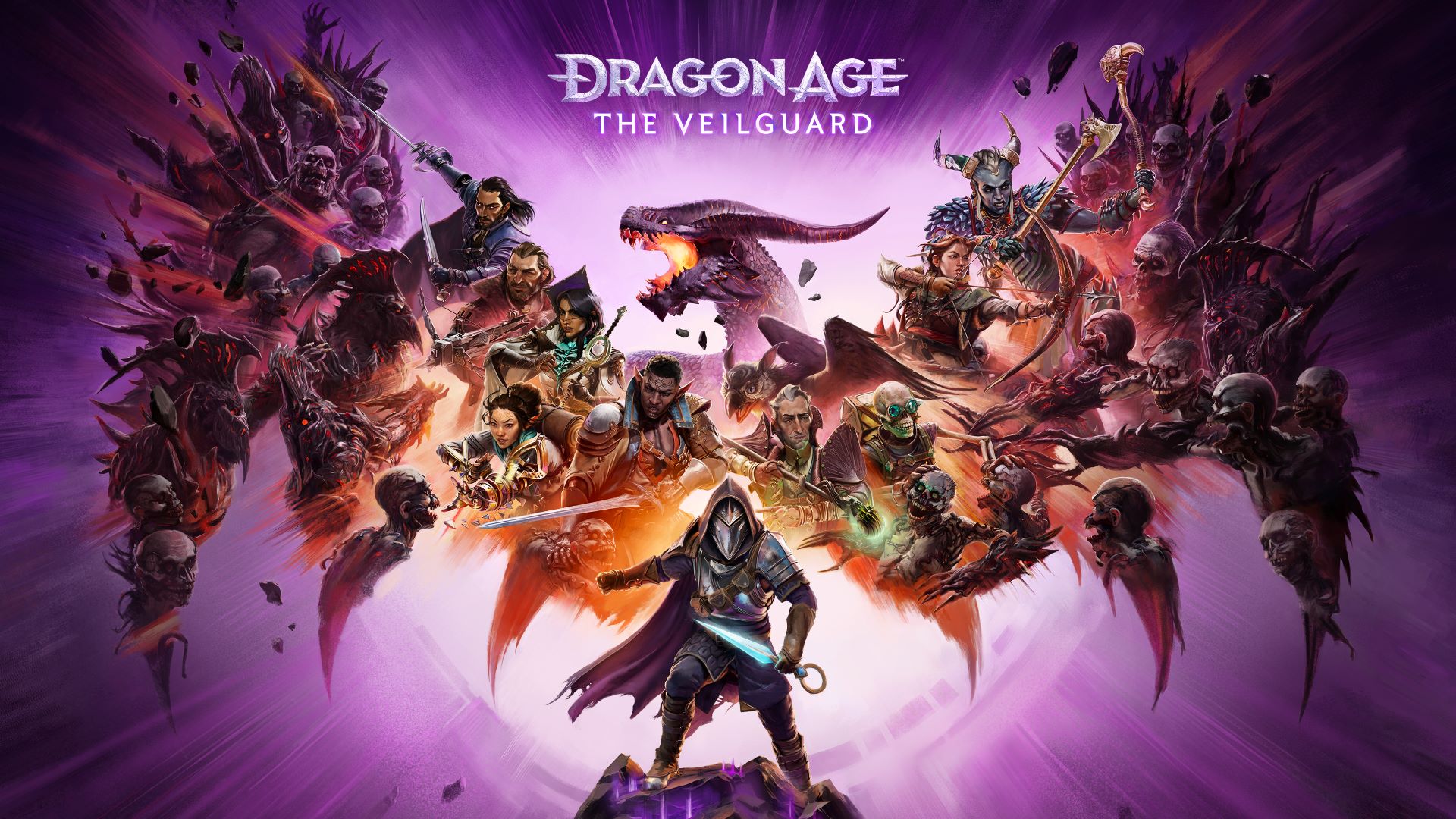
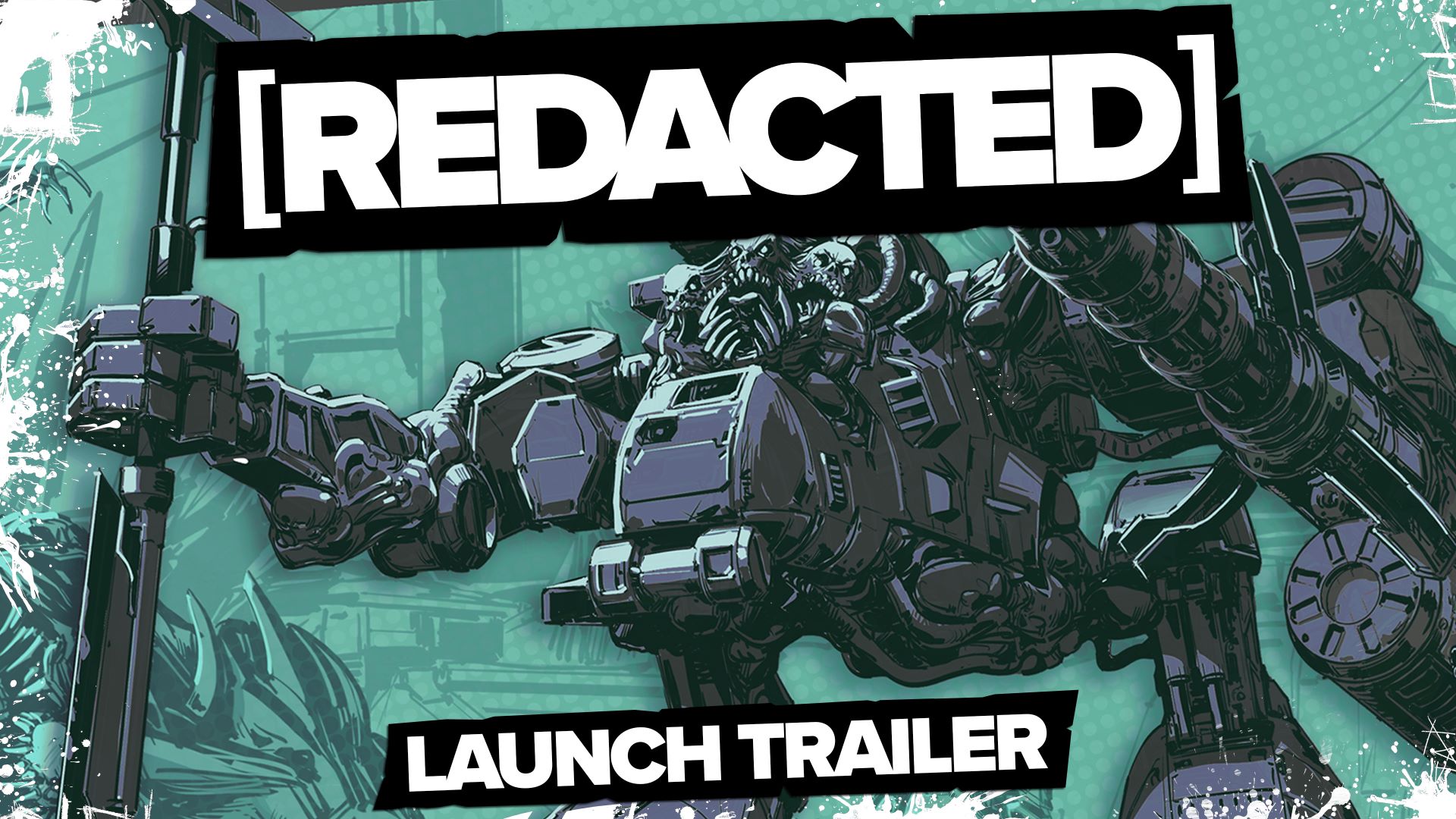
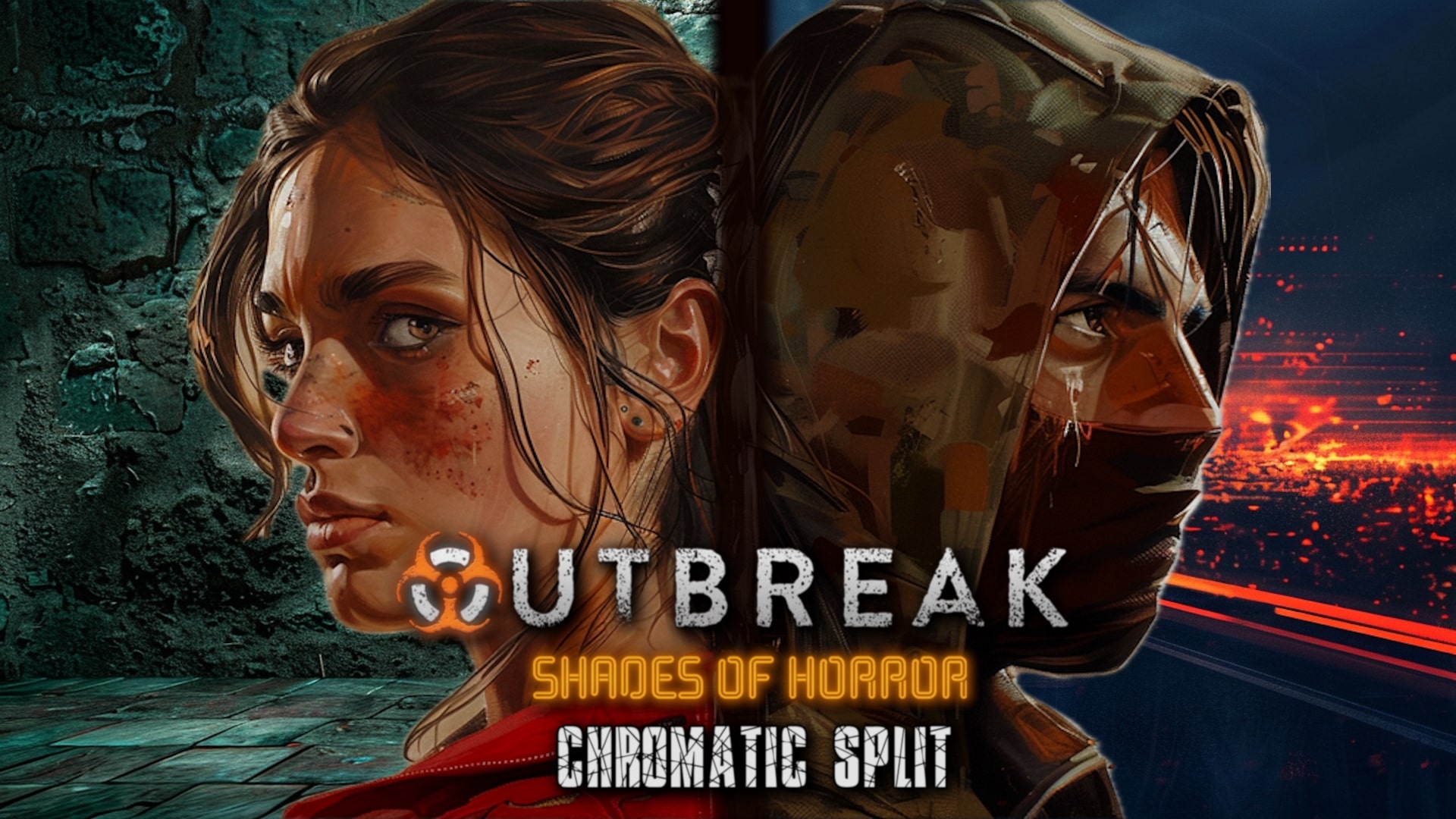

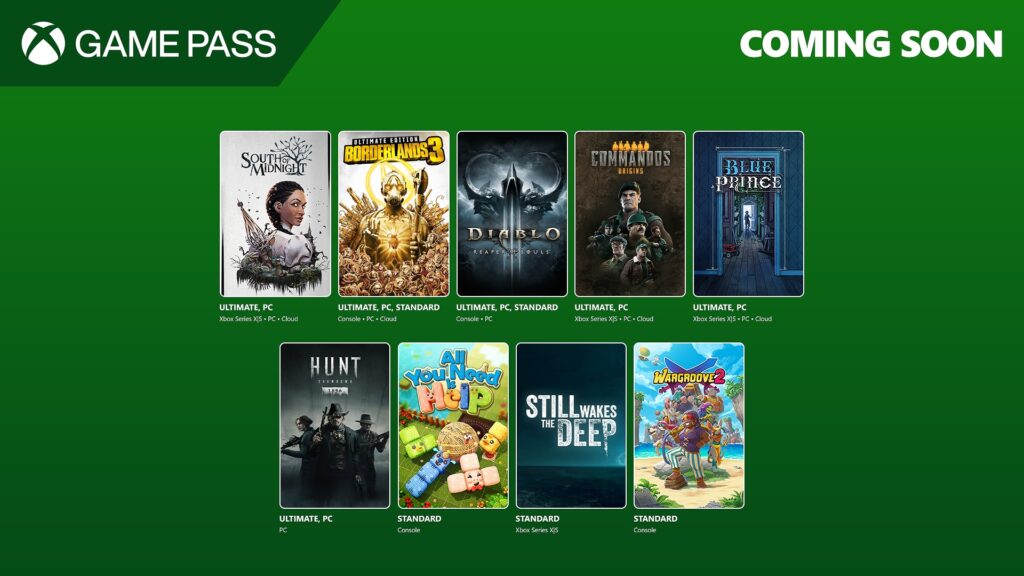








 English (US) ·
English (US) ·